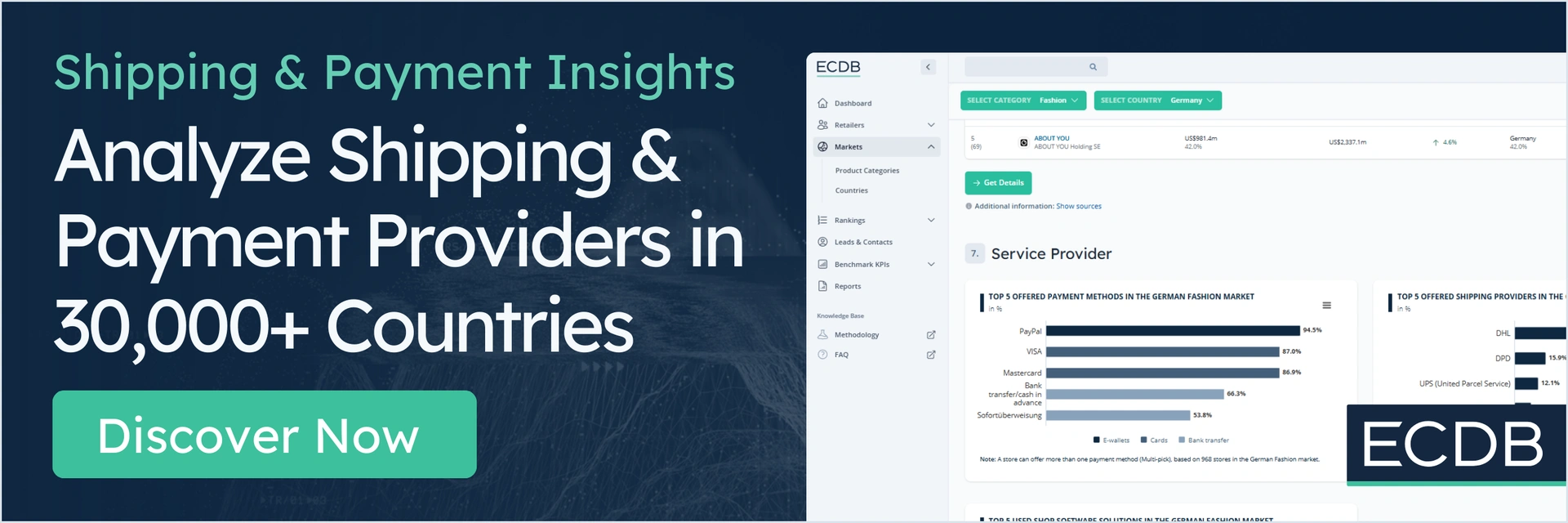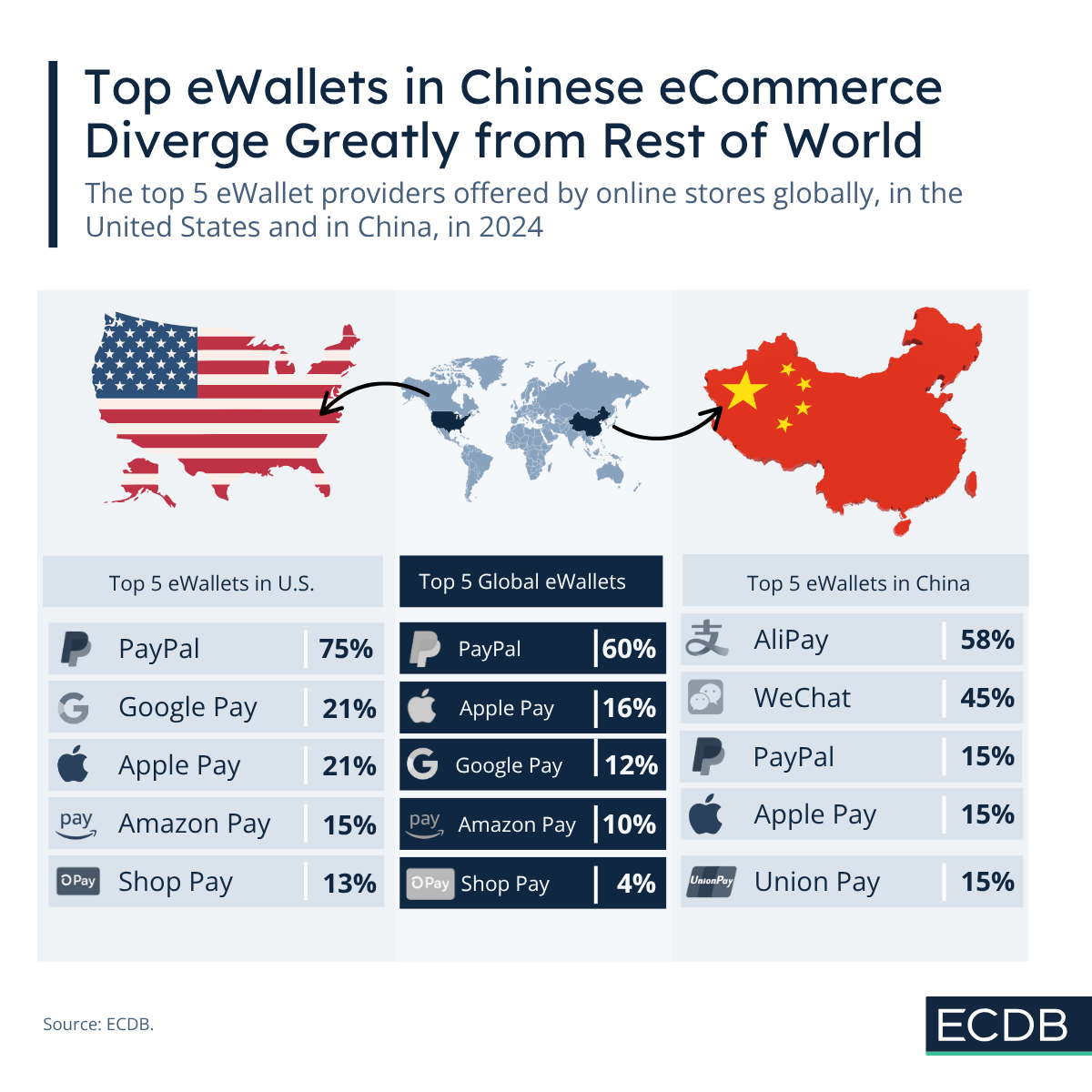Digital payments belong to the most useful technical developments in eCommerce, as they significantly enhance the purchasing process.
Especially eWallets make payments easier and safer. Beginning with PayPal, the online payment trend grew and inspired other companies to follow suit. Now, there is a wider variety of online payment providers available.
A look into leading market’s eWallet provider landscape shows that the United States still rules global eCommerce payment trends. In comparison, China is digitally minded but has its own type of eWallet ecosystem.
What Is an eWallet?
An eWallet, or digital wallet, is a software-based payment system that allows users to save payment information of various types (cards, bank accounts) to their profile.
This streamlines the payment process because users don’t need to enter their card or banking details each time they make a purchase. eWallets have further safeguards and consumer protection services that make it easier than ever for consumers to manage their payments.
With the rise of PayPal came the spread of rival eWallets by other providers, the biggest among them by Apple and Google. Considering that these companies are all based in the United States, it explains why the global ranking of the most widely used eWallets in eCommerce is so similar to the U.S. ranking.
The United States Ranking Aligns With Global Payment Provider Preferences
In the United States and worldwide, PayPal is the number one eWallet provider in eCommerce. In this case, it means that it belongs to the most regularly offered payment options by retailers.
PayPal adoption is particularly high in European markets. PayPal even ranks first in Germany as the most offered eCommerce payment option.
Although PayPal’s adoption among U.S. eCommerce stores is not as high as in Germany, it is still widespread at 75%. It ranks similarly high worldwide, being adopted by 60% of global online stores.
The remaining top 5 eWallets in the United States have much lower adoption rates among online stores. Google Wallet and Apple Pay are at a similar level with 21% of online stores offering them. Google is slightly ahead in the U.S. Worldwide, Apple takes a clearer lead, with a penetration rate of 16% versus 12% for Google.
Amazon Pay and Shop Pay follow in fourth and fifth place, in both U.S. and global eCommerce. Their adoption rate is higher in the U.S. than worldwide, but their rankings remain the same.
China’s eWallet Payment Landscape Is Distinct But Influential
China is a unique market with a highly self-contained eCommerce ecosystem. It is dominated by a few large domestic players that replace the structures and roles other companies fulfill elsewhere.
Due to its size and economic prowess, China is an important market for international companies, in terms of both buying the products and enabling manufacturing and resources. In China, it is nearly impossible to beat the market leaders because they are centrally connected and directly address everyday consumer needs.
The majority of online stores in China offer AliPay (58%), followed by WeChat (45%). These two centralized services cover a wide range of daily needs. But two of the major eWallet providers from the U.S. have a presence in China as well, albeit not in a leading position.
Both Apple and Google have customers in China, as the market is highly profitable and the products are in demand. But national regulation hinders a wider prevalence of these two companies, especially in the payments space. Local giants like Alipay and WeChat Pay dominate everyday transactions, thanks to deep integration with social platforms, local banking systems, and government policies. As a result, while Apple Pay and Google Pay are available, they remain niche options compared to the seamless, all-in-one experiences offered by the domestic players.
UnionPay, a Chinese state-owned financial service, is on the same level. It stands in cooperative agreement with foreign payment leaders to bridge the gap between networks. Despite its large population and pool of online shoppers, China's ecosystem mostly stays within domestic boundaries, allowing U.S. companies to take the world lead in payment adoption.










